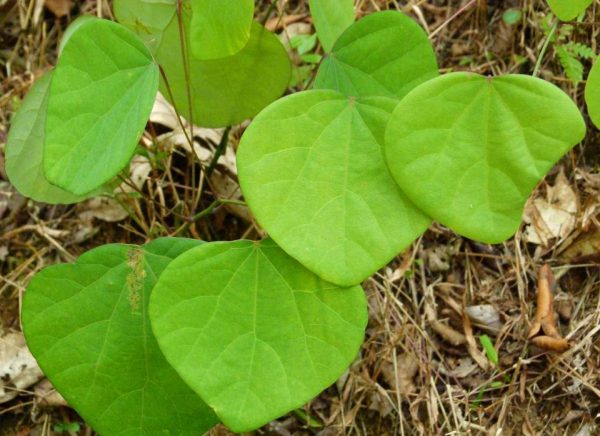Bakuchi (Psoralea corylifolia): The Skin-Soothing Remedy of Ayurveda
Basonym of Drug: The medicinal herb known as Bakuchi is scientifically referred to as Psoralea corylifolia.
Main Synonyms: In Ayurveda, Bakuchi is known by various synonyms, including:
- Bavanchi
- Kamala
- Somaraji
- Vakuchi
- Kushtanashini
Regional Name: Bakuchi is also known by different names in various regional languages. Some common regional names include:
- Hindi: Bakuchi, Bavachi
- Bengali: Bakuchi
- Kannada: Bakuchi, Bavanchi
- Malayalam: Karpokkari
- Marathi: Bavanchi, Vakuchi
- Tamil: Soriyam
- Telugu: Bavanchalu
Botanical Name: The botanical name of Bakuchi is Psoralea corylifolia.
Family: Bakuchi belongs to the Fabaceae family.
Classification of Dravya (Gana) as described in Charak and Sushrut: In the classical Ayurvedic texts of Charak and Sushrut, Bakuchi is classified as follows:
- Charak: Bakuchi is categorized under the group of “Vranahara,” which means it aids in wound healing and managing skin disorders.
- Sushrut: In Sushrut Samhita, Bakuchi is classified as a “Keshya Dravya,” indicating its beneficial effects on hair.
External Morphology: Bakuchi is a small annual herb with trifoliate leaves. The flowers are purple, and the fruits are small, flattened, and brownish-black in color.
Useful Parts: The useful part of Bakuchi is the seeds.
Important Phytoconstituents: Bakuchi seeds contain various bioactive compounds, including psoralen, isopsoralen, and bakuchiol, which contribute to its medicinal properties.
Rasa Panchaka: The Rasa Panchaka (five tastes) of Bakuchi is as follows:
- Rasa (Taste): Bitter (Tikta), Pungent (Katu)
- Guna (Quality): Light (Laghu), Dry (Ruksha)
- Virya (Potency): Hot (Ushna)
- Vipaka (Post-digestive taste): Pungent (Katu)
Action on Dosha, Dhatu, and Mala: Bakuchi primarily pacifies the Kapha and Vata doshas. It acts on the Rakta (blood) dhatu and has an effect on the Purisha (stool).
Prayogarha Vyadhi (Therapeutic Indications): Bakuchi is utilized in Ayurvedic medicine for various therapeutic purposes, including:
-
Skin Disorders: Bakuchi is well-known for its efficacy in managing skin conditions like leucoderma (vitiligo) and other hypopigmentation disorders. It helps in promoting melanin synthesis, thus restoring skin color.
-
Wound Healing: Bakuchi aids in wound healing and is used to treat non-healing wounds and ulcers.
-
Hair Health: Bakuchi is beneficial for hair health and may help in managing hair loss and promoting hair growth.
-
Anti-inflammatory: It possesses anti-inflammatory properties and may be used to alleviate inflammatory conditions.
Amayikaprayoga and Matra (Therapeutic Administration and Dose): Bakuchi is commonly administered in the form of an oil or paste for external application. The dosage depends on the specific condition and the individual’s constitution. Commonly used doses include:
- Bakuchi Oil: Applied externally to the affected skin areas
- Bakuchi Paste: Applied externally to the affected skin areas
- Swayambhuva Guggul – 250mg to 500mg bid
- Shuddha Bakuchi Churna – 1-2 gm
Vishishta Yoga (Names of Important Formulations): Bakuchi is an essential ingredient in various Ayurvedic formulations used for skin disorders and hair health.
Vishakta Lakshan (Adverse Effects): Bakuchi should be used with caution, as it may cause photosensitivity in some individuals when applied topically. It is advisable to avoid sun exposure after applying Bakuchi oil or paste on the skin, but it is advised for sun exposure when used in leukoderma.
Chikitsopachara (Remedial Measures): Bakuchi should be used judiciously and only under the guidance of a qualified Ayurvedic practitioner. It is essential to consider an individual’s specific health conditions and dosha imbalances while prescribing Bakuchi.
Shodhana (If Required): Bakuchi seeds needs to be purified before oral intake or applied locally on skin. It has erosive nature so may cause blisters formation on skin when applied directly. Three procedures, viz. Nimajjana (immersion), Prakshalana (washing with water), and Bharjana (roasting), were mentioned for pretreatment of Bakuchi. Pretreatments are noted as soaking of Bakuchi fruits in Gomutra (cow’s urine) or Ardraka Swarasa (juice of Zingiber officinale Rosc.) for 7 or 21 days or Bibhitaka Kwatha (decoction of Terminalia belerica Roxb.) for 1 night and Bharjana (roasting) in Ghee. Blisters occur because of the presence of furanocoumarins like psoralen in formulations, which holds Bakuchi. Pretreatment performed on Bakuchi fruits may derive newer chemical moieties, further rendering it helpful to minimize adverse drug reactions, increase the efficacy of Bakuchi or its containing formulation, and further break the pathogenesis of the disease.
Bakuchi, the skin remedy, holds significant importance in Ayurvedic medicine, especially in managing skin disorders and promoting hair health. Its unique properties make it a valuable herb for maintaining healthy skin and hair.
Please let us know for any correction or wrong information: We strive to provide accurate and informative content. If you find any inaccuracies or have any suggestions to enhance the article, kindly share your feedback. Your valuable input helps us improve and deliver content that aligns with the needs of our readers. Thank you for your support!



